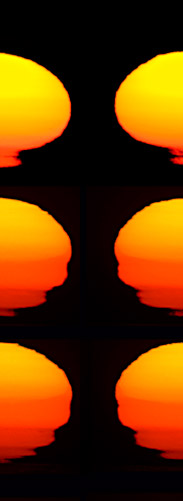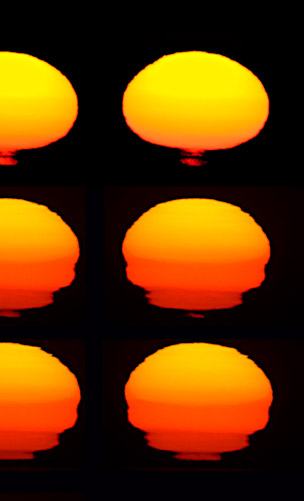
OPOD
What's New
Rays & Shadows
Crepuscular rays
Anti-crepuscular
Cloud shadows
Mountain Shadow
Earth's Shadow Blue Sky
Sunsets
Sunset mirages
Air Temperatures
Etruscan vase
M-Mir Sunset
More Images
Green Flash
Moonrise/set
Opposition effect
Water Droplets
Rainbows
Ice Halos
High Atmosphere
Links & Resources
Search - Index
123456789012345678

| Sunset Mirages |
|
Sunset mirages, two or more images of the sun, are seen when its low slanting rays are unusually refracted between air layers of different temperature. Usually the air temperature falls smoothly with increasing height. The most we then see is a slightly flattened sun. A mirage needs more severe temperature variations. One class of mirages, M-Mir sunsets,occur when there is a temperatureinversion – warm air overlays cooler layers. The sunset mirage at left was produced by multiple inversions. Another sunset mirage form, Jules Verne called it an “Etruscan vase”, occurs when the sun-warmed afternoon sea produces an abnormally hot air layer close above its surface. Miraged suns often presage the elusive green flash! |
||||||
| Mirages occur at sunrise too. Sunrise mirage sequence captured over Casco Bay, Cape Elizabeth, Maine by John Stetson. ©John Stetson, shown with permission | |||||||
��


